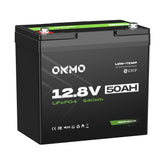What Does AH Mean on a Battery?
So, you’re staring at a battery—maybe the one in your car, your new RV, or that fancy portable power station—and you see a mysterious code like “100Ah” or “7.5Ah” stamped on the side. Your brain immediately goes, “What in the world is an ‘Ah’?!”
Is it a sound of realization? “Ah-hah!”
Is it a unit of cosmic energy from a sci-fi movie?
Fear not, curious energy seeker! You’re about to get the clearest, most entertaining explanation of Ampere-hours this side of the internet. Let’s demystify this acronym together, no electrical engineering degree required.
The Bottom Line: It’s the Battery’s “Gas Tank”
In the simplest terms, Ah stands for Ampere-hour, or Amp-hour.
Think of it as the size of your battery’s “gas tank.” It doesn’t tell you how fast the energy can flow (that’s more about voltage and power), but it tells you how much energy is stored inside. A bigger Ah rating means a bigger tank. It’s that simple.
 Breaking Down the Voodoo: Amps and Hours
Breaking Down the Voodoo: Amps and Hours
Let’s play with some Lego blocks of electricity. Don’t worry, they don’t hurt to step on.
-
An Amp (or Ampere): This is the unit for electrical current. Think of it as the flow rate of electricity, like the number of electrons passing by on a tiny electron highway. More Amps = a heavier flow of electricity.
-
An Hour: Well, you know… 60 minutes. A coffee break. The length of a good movie.
Put them together, and you get Amp-hours (Ah).
The Official (But Painless) Definition:
A 1 Ah rating means a battery can deliver a current of 1 Amp for 1 hour before it’s completely drained and needs a recharge.
It’s like saying a water hose can sustain a flow of 1 gallon per minute for 60 minutes, meaning it’s connected to a 60-gallon tank.
 The “How Long Will It Last?” Superpower
The “How Long Will It Last?” Superpower
This is where Ah becomes your best friend. You can use it for a little electrical fortune-telling with this magic formula:
Time (hours) = Battery Ah / Device Amp Draw
Let’s see it in action with our friendly 100Ah battery:
-
Scenario 1: The RV Refrigerator. Let’s say your RV fridge draws an average of 5 Amps.
-
100 Ah / 5 A = 20 hours. So, your battery could theoretically run that fridge for about 20 hours.
-
-
Scenario 2: The Phone Charger. Your phone charger might only pull 1 Amp.
-
100 Ah / 1 A = 100 hours. That’s a lot of scrolling!
-
-
Scenario 3: The Powerful Inverter. You’re running a microwave through an inverter that’s pulling 50 Amps.
-
100 Ah / 50 A = 2 hours. Yep, powerful things are thirsty!
-
Reality Check Corner: These are ideal-world numbers. In the real world, temperature, battery age, and the fact that you should never fully drain most batteries mean your actual time will be a bit less. But it’s a fantastic starting point for planning.
 The Plot Twist: Not All Ah Are Created Equal!
The Plot Twist: Not All Ah Are Created Equal!
Here’s a pro tip that will save you from future confusion. The meaning of Ah changes slightly depending on the type of battery. It’s like how a “cup” can mean a unit of flour in baking or a trophy in sports.
-
For Car Starter Batteries: The Ah rating is like a quiet, background stat. These batteries are designed for a short, massive jolt to start your engine (measured in CCA - Cold Cranking Amps). Their Ah is measured over a long 20-hour period. Trying to use a car battery like a deep-cycle one will leave you disappointed and with a dead battery.
-
For Deep-Cycle Batteries (RV, Boat, Solar): This is where Ah is KING! These batteries are the marathon runners, built to be discharged and recharged regularly. Their Ah rating is their core identity. But beware:
-
Lead-Acid (the old guard): If it says 100Ah, you should only use about 50Ah of that (don’t go below 50% charge) if you want it to live a long, happy life.
-
Lithium (LiFePO4 - the new superstar): If it says 100Ah, you can use almost all 100Ah! This is one of the huge reasons everyone is switching to lithium—you get to use the whole “gas tank” you paid for.
-
The Final Boss: Watt-hours (Wh) - The True Energy Measure
If you want to get really smart, the ultimate measure of a battery’s energy is the Watt-hour (Wh). It’s like knowing the total number of calories in your gas tank, not just its volume.
The easy calculation is: Wh = V * Ah
So, a 12V 100Ah battery has 12 x 100 = 1200 Wh of energy.
A 24V 100Ah battery has 24 x 100 = 2400 Wh of energy.
See? Even though they’re both “100Ah,” the 24V battery holds twice the total energy! When comparing different batteries, Wh is your best friend.
 Conclusion: Your “Ah-Ha!” Moment
Conclusion: Your “Ah-Ha!” Moment
So, the next time you see “Ah” on a battery, you’ll know exactly what it means.
-
It’s the capacity.
-
It’s the gas tank size.
-
It’s your key to figuring out how long your gadgets will run.
You are now officially empowered to talk about batteries without sounding like a newbie. Go forth, calculate your device runtimes, and enjoy the perfectly charged life









